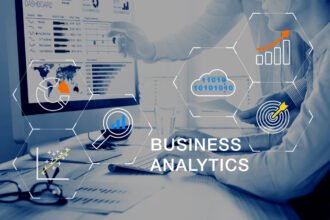In June, I wrote about the need to fund portfolios of analytics as opposed to individual projects in order to enable analytic innovation. Tied to that theme is a common pitfall with corporate budgeting that I’d like to address here.
In June, I wrote about the need to fund portfolios of analytics as opposed to individual projects in order to enable analytic innovation. Tied to that theme is a common pitfall with corporate budgeting that I’d like to address here. Many organizations fall victim to what I’m about to discuss and a fundamental shift in how organizations think about and fund analytics is required to address it.
Today, the systems used to facilitate analytics within most organizations are owned by IT, which means that IT owns the budget to purchase and maintain the systems. Business units may help fund the systems via charge back models, but usually it is IT’s budget that gets hit directly with any system expenses. With the evolution of the way analytics are created and used, this can cause a big problem.
In the past, almost all analytics were internally facing and were used to support an organization’s core business. In other words, when analytics supported marketing activities, they would be used to spend more effectively and get better returns. In the end, however, analytics supported existing products even though it was quite possible to attach an ROI to the analytic processes. Today, there are more and more cases of new products that have analytics as the core ingredient. Recommendation engines, traffic projections aggregated from GPS devices, and recommendations to improve farm yields based on sensor data from equipment all represent cases where data and analytics are the product and directly generate revenue. This means the costs to support analytics are directly, not indirectly, supporting revenue.
A problem arises, however, when it comes time to budget for the systems even to support analytics that drive a quantifiable return. The business team is judged on ROI and can reasonably gain approval for a new analytics process that will drive revenue. However, IT today is often tasked simply with reducing costs year over year and minimizing expansion of system costs. While the business will get a lot of credit for a successful new analytics process, all IT will get is beat up over having spent too much because the Return part of ROI doesn’t flow through to IT.
As a result, investments either don’t happen or business units bypass IT and buy their own systems because “IT just doesn’t get it and won’t help us”. Such thinking and actions are behind the Gartner claim that CMOs will spend more on IT than CIOs by 2017. In many cases (but not all!), IT is being unfairly blamed for not wanting to help when in fact the constraints and goals IT has been given make it very hard or impossible for IT to help.
For pure infrastructure projects and assets, it makes sense to have IT focus on keeping costs down. A phone system is pure overhead. We might need phone lines, but they don’t directly drive revenue. When investing in analytics, however, we often can’t look at systems as simply a facilitator because the data stored and the analysis run against that data drive quantifiable returns. Whether it is the classic example of helping marketing be more efficient or a modern example of an analytics-based product, it is critical not to hold IT to arbitrary cost limits. When an investment makes sense, it should be made.
For example, it would be hard to find a manufacturer that would refuse to build a new plant to manufacture a product that has high, proven demand that will support the initial and ongoing costs of the plant. The cost of the plant is correctly seen as a necessary part of creating the new product line and driving the related revenue.
However, I repeatedly see organizations refuse to invest in additional analytic infrastructure even when the benefits of the investment can be seen. Rather than seeing the system expenses as a necessary part of capturing a revenue stream, they are seen simply as extra IT costs. Taking the costs out of context of the returns makes the costs look very unappealing and leads to missed opportunities.
If analytics are to continue to become more strategic and grow in impact to organizations, then there must be a mechanism to distinguish between IT costs that are truly overhead and those that can be tied to revenue. The costs of analytic systems must be directly associated not just with IT, but with the business processes and products they support. At the same time, the returns can’t be associated only with the business unit, but also have to be credited back to the data and analytics that made them possible.







